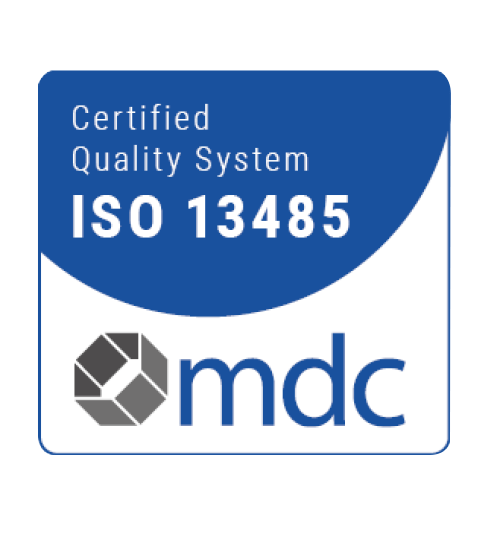
In dental care, corrective dentistry is like a guiding light, offering various treatments beyond just making your smile look good. It’s about fixing both how your teeth look and how they function. From straightening crooked smiles to bringing back lost sparkles, corrective dentistry aims to holistically improve your overall dental health, giving you a journey of renewal and self-discovery.
Understanding the benefits of corrective dentistry is essential. It’s not just about getting a perfect smile; it’s about feeling confident, eating comfortably, and keeping your mouth healthy. As we explore the many advantages of corrective dentistry, we find a story of empowerment, where each treatment can change lives for the better and bring hope for a happier, healthier future.
Common Dental Issues Addressed by Corrective Dentistry
Corrective dentistry tackles a range of common dental issues that impact millions worldwide. From crooked teeth to missing ones, these issues affect appearance, oral health, and overall well-being. Through various treatments and procedures, corrective dentistry aims to restore both the function and aesthetics of the smile, providing patients with renewed confidence and improved oral health.
Crooked Teeth
Misaligned teeth, a common dental issue, not only affect the aesthetics of one’s smile but can also lead to oral health problems such as difficulty cleaning between teeth, increased risk of cavities, and gum disease.
Misaligned Bite
An improper bite, where the upper and lower teeth do not fit together correctly, can result in discomfort, jaw pain, difficulty chewing, and even temporomandibular joint (TMJ) disorders.
Tooth Discoloration
Stained or discolored teeth can significantly impact an individual’s confidence and self-esteem. This discoloration may be caused by aging, consumption of certain foods and beverages, smoking, or poor oral hygiene.
Missing Teeth
Tooth loss, whether due to injury, decay, or other reasons, can lead to various functional and aesthetic issues, including difficulty in chewing, speech impediments, and changes in facial appearance.
Gum Disease
Periodontal diseases, such as gingivitis and periodontitis, affect the gums, can lead to tooth loss, and have been linked to systemic health issues like cardiovascular disease and diabetes.
Benefits of Corrective Dentistry
Corrective dentistry encompasses a range of treatments to improve the appearance and functionality of the teeth and mouth. Beyond mere aesthetics, these procedures offer many benefits that positively impact oral health, confidence, and well-being.
Improved Oral Health
Corrective dentistry addresses underlying dental issues such as misalignment and decay, preventing complications like cavities and gum disease. This early intervention leads to a healthier mouth and reduces the risk of future dental problems.
Enhanced Confidence
Corrective dentistry can significantly boost confidence and self-esteem by transforming smiles and addressing dental imperfections. By doing so, individuals feel more comfortable and assured in social and professional settings, improving their overall quality of life.
Better Oral Function
Corrective procedures improve the teeth’ appearance and enhance their functionality. This procedure includes improved chewing ability, speech clarity, and overall oral comfort, allowing individuals to enjoy a better quality of life with increased ease and efficiency in everyday activities.
Prevention of Future Issues
Corrective dentistry helps prevent more serious oral health problems by addressing dental issues promptly and effectively. This proactive approach to dental care can save individuals from potential pain, discomfort, and costly treatments.
Long-Term Durability
Many corrective dentistry procedures offer long-lasting results, providing individuals with durable solutions for their dental concerns. This preventive measure ensures that the benefits of treatment endure over time, allowing individuals to enjoy the results of their investment for years to come.
Natural-Looking Results
With advancements in dental materials and techniques, corrective dentistry can deliver natural-looking results that seamlessly blend with the rest of the smile. This advancement ensures that individuals achieve aesthetically pleasing outcomes that look and feel like their natural teeth.
Customized Treatment Plans
Corrective dentistry is highly personalized, with treatment plans tailored to each individual’s unique needs, goals, and preferences. This treatment ensures patients receive care designed to address their dental concerns and achieve optimal results.
Improved Overall Well-Being
A healthy, attractive smile can positively impact well-being, increasing happiness, confidence, and self-assurance. Corrective dentistry helps individuals feel better about themselves, leading to a more fulfilling life.
Corrective dentistry is a gateway to improved oral health, renewed confidence, and enhanced functionality. Its personalized approach and natural-looking results offer transformative benefits extending beyond the smile, fostering a healthier lifestyle for individuals seeking lasting solutions to dental concerns.
How to Choose the Right Corrective Dentistry Procedure
When determining the most suitable corrective dentistry procedure, seeking guidance from a qualified dentist is crucial. They’ll carefully assess your dental situation, consider your preferences and goals, and explain the available treatment options. As you consider your choices, consider factors such as the complexity of the procedure, how long it will take to recover, and what ongoing care might be necessary. Additionally, discussing payment options and insurance coverage with your dentist can help you plan for the financial aspect of your treatment and ensure you make a decision that aligns with your needs and budget.
Types of Corrective Dental Procedures
Corrective dental procedures encompass a variety of treatments aimed at addressing dental imperfections and restoring oral health and aesthetics. These procedures offer tailored solutions to meet individual needs and preferences, from straightening misaligned teeth to replacing missing ones.
Orthodontic treatments focus on correcting tooth misalignment and bite issues, offering improved oral health and enhanced aesthetics. Options range from traditional braces using metal brackets and wires to clear aligners like Invisalign, which provide discreet solutions for straightening teeth.
Orthodontic Treatments
Braces
Traditional metal braces use wires and brackets to align misaligned teeth properly. They are effective for addressing complex dental issues.
Clear Aligners
Aligners offer a discreet alternative to braces and are removable for convenience during eating and cleaning.
Cosmetic Dentistry
Cosmetic dentistry procedures aimed at enhancing the smile’s appearance encompass various aesthetic treatments such as teeth whitening to remove stains and veneers to conceal imperfections like chips and gaps, resulting in a more attractive smile overall.
Teeth Whitening
Professional whitening treatments effectively remove stains and discoloration, restoring a brighter, more youthful smile.
Veneers
Porcelain veneers are custom-made shells covering teeth’ front surfaces to conceal imperfections such as chips, cracks, and gaps.
Dental Implants:
Implants replace missing teeth by surgically placing artificial tooth roots into the jawbone, providing a permanent solution and preserving jawbone health.
Restorative Dentistry
Restorative dentistry procedures are dedicated to repairing or replacing damaged or missing teeth and restoring both function and aesthetics.
Fillings
Tooth-colored fillings repair cavities and restore teeth’ natural appearance and function.
Crowns and Bridges
Dental crowns cover damaged or decayed teeth, while bridges replace missing teeth by bridging the gap between adjacent teeth.
Dentures
Partial or complete dentures are removable prosthetic devices that replace multiple missing teeth, restoring chewing function and facial aesthetics.
Customized corrective dental procedures, strategically combined, offer comprehensive treatment plans tailored to address specific concerns. This personalized approach ensures effective care for optimal oral health and aesthetics, resulting in long-lasting results and improved well-being.
Customized Treatment Approach in Corrective Dentistry
In corrective dentistry, personalized treatment plans are crucial as they address each patient’s dental needs, goals, and preferences. Dentists conduct thorough assessments to pinpoint specific concerns, enabling tailored treatments. This approach guarantees effective care, meets patient expectations, accommodates adjustments during treatment, and promotes a partnership between the dentist and the patient.
Corrective Dentistry Across Different Life Stages
As individuals progress through different life stages, their dental needs evolve, necessitating age-appropriate corrective dentistry interventions. In childhood, orthodontic treatments like braces address misaligned teeth, guiding proper dental development. During adolescence and young adulthood, cosmetic procedures such as teeth whitening or veneers may become relevant to enhance aesthetics and confidence. Later in life, restorative treatments like crowns or implants help address age-related tooth wear, decay, or loss, ensuring functional and aesthetic restoration. Understanding how corrective dentistry applies at each life stage allows for tailored care, promoting optimal oral health and aesthetics throughout one’s lifetime.
Dental Preventive Measures
introduces the critical importance of addressing dental issues promptly to prevent further complications and promote long-term oral health. Individuals can avoid more extensive treatments and maintain optimal dental well-being by intervening early.
Prevention of Complications
Early intervention is vital in dentistry because it allows dentists to address minor issues before they escalate into more significant complications. For example, treating a minor cavity can prevent it from spreading and causing more extensive damage to the tooth, potentially leading to a root canal or extraction. By addressing dental problems early on, individuals can avoid the discomfort, inconvenience, and expense of more complex treatments. This proactive approach to dental care preserves oral health and promotes overall well-being.
Dental Hygiene
Addressing dental issues promotes long-term oral health by preventing the development of more severe conditions. For instance, early gum disease treatment can halt its progression and avoid tooth loss, preserving the smile’s integrity and supporting overall oral function. Early intervention also allows dentists to identify underlying issues that may not be immediately apparent but could lead to significant problems if left untreated. By diagnosing and treating these issues early, individuals can maintain healthier teeth and gums for years, reducing the need for extensive dental work.
Visit our FirstClass Aligners blog today to learn more about teeth straightening services near you!






